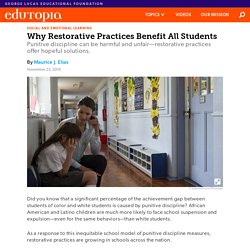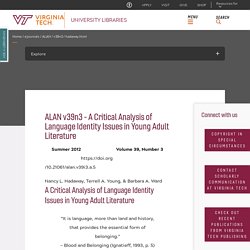

Adolescence: Crash Course Psychology #20. What adolescents need to thrive. Adolescence: a critical window for learning. SEL Infographic. Social Emotional Learning: What to Know. Have you heard the term social-emotional learning, or SEL?

Maybe SEL is something your district has decided to make a priority. Or maybe SEL is a skill set that you’ve been hearing a lot about in professional development. But what is social and emotional learning? And why is it so important? Here’s what you need to know about SEL. What is social-emotional learning? Social-emotional learning is the process of developing and using social and emotional skills. People with strong social-emotional skills are better equipped to manage daily challenges, build positive relationships, and make informed decisions. That’s important because your students aren’t born knowing how to manage emotions, solve problems, and get along with others. Social-emotional learning skills The leader in the field of SEL instruction is the Collaborative for Academic, Social, and Emotional Learning (CASEL).
The benefits of social-emotional learning The study followed these students for nearly two decades. Three Simple Ideas to Get Students to Pay Attention. Why Restorative Practices Benefit All Students. Did you know that a significant percentage of the achievement gap between students of color and white students is caused by punitive discipline?

African American and Latino children are much more likely to face school suspension and expulsion—even for the same behaviors—than white students. As a response to this inequitable school model of punitive discipline measures, restorative practices are growing in schools across the nation. I asked Brian H. Smith, Ph.D., a research scientist with the Committee for Children, to share his perspectives on the current status and future directions of discipline in schools. EDUTOPIA: What is the current status of the discipline system and such practices as zero tolerance? DR. Suspension rates increased dramatically in the 1990s as schools embraced zero-tolerance discipline policies. Chimamanda Adichie: The danger of a single story. Understanding the identity formation of Black adolescents. Valuing Culture Infographic. Mirrors Windows and Sliding Glass Doors. Young Adult Literature: Pedagogy and Social Justice.
Making Connections: Culturally Responsive Teaching and the Brain. In reality, cultural responsiveness is more of a process than a strategy.

It begins when a teacher recognizes the cultural capital and tools students of color bring to the classroom. She is then able to respond to students' use of these cultural learning tools positively by noticing, naming, and affirming when students use them in the service of learning. The most common cultural tools for processing information utilize the brain's memory systems -- music, repetition, metaphor, recitation, physical manipulation of content, and ritual.
The teacher is "responsive" when she is able to mirror these ways of learning in her instruction, using similar strategies to scaffold learning. For example, a science teacher I mention in the book wasn't having much success with her sixth-grade students learning the science vocabulary. Afterwards, learning weekly vocabulary was more active and game-like.
You'll notice that there's no mention of Africa, Mexico, or race at all. A Critical Analysis of Language Identity Issues in Young Adult Literature. Nancy L.

Hadaway, Terrell A. Young, & Barbara A. Ward “It is language, more than land and history, that provides the essential form of belonging. Following Erikson’s stages of development (1968), the major task for adolescents is to develop a stable and positive sense of identity and to discover who they are as individuals, separate from family and community. Learning by its very nature brings identity changes that positively transform and, at times, negatively position students ( Pavlenko & Norton, 2007 ).
Adolescence, Identity, and English Learners: A Conceptual Framework How English learners see themselves in relation to learning a new language and culture is captured in the notion of ethnic identity ( Harklau, 2007 ). Caution is needed in considering these adaptations, however. Hijuelos describes such a case in his introduction to Cool Salsa: Bilingual Poems on Growing Up Latino in the United States ( Carlson, 1994 ). Selecting Young Adult Literature for Critical Analysis. Exploring Language and Identity: Amy Tan's "Mother Tongue" and Beyond. Disrupt the hetero-normative view by diversifying your classroom library: Gay YA Books.